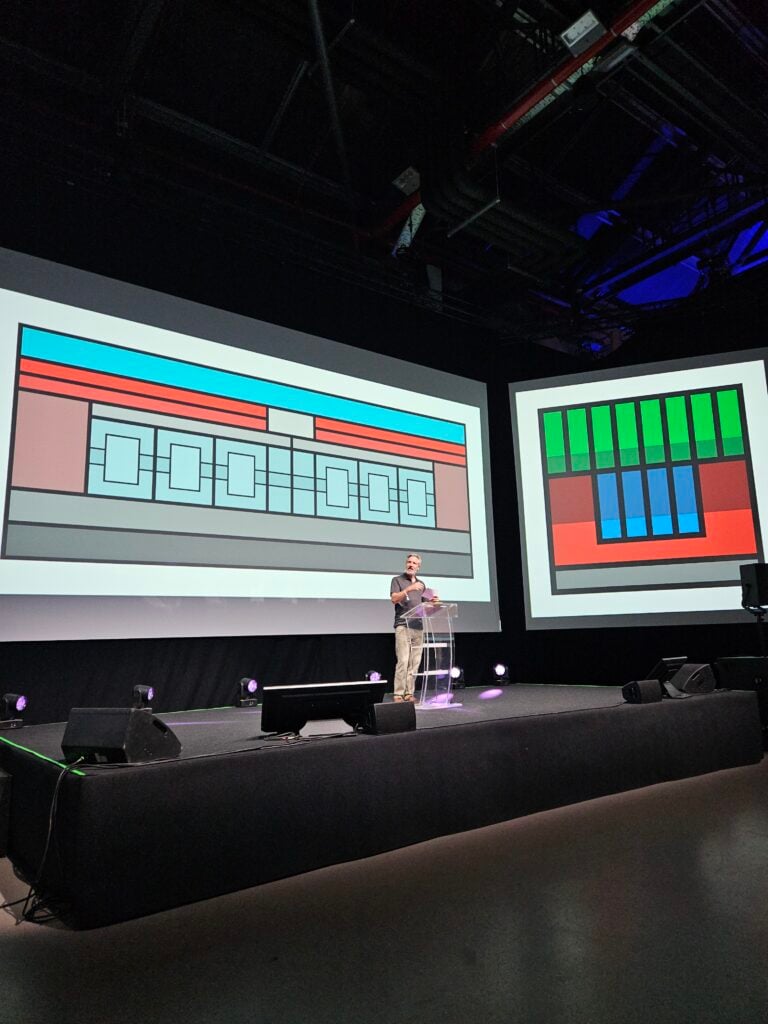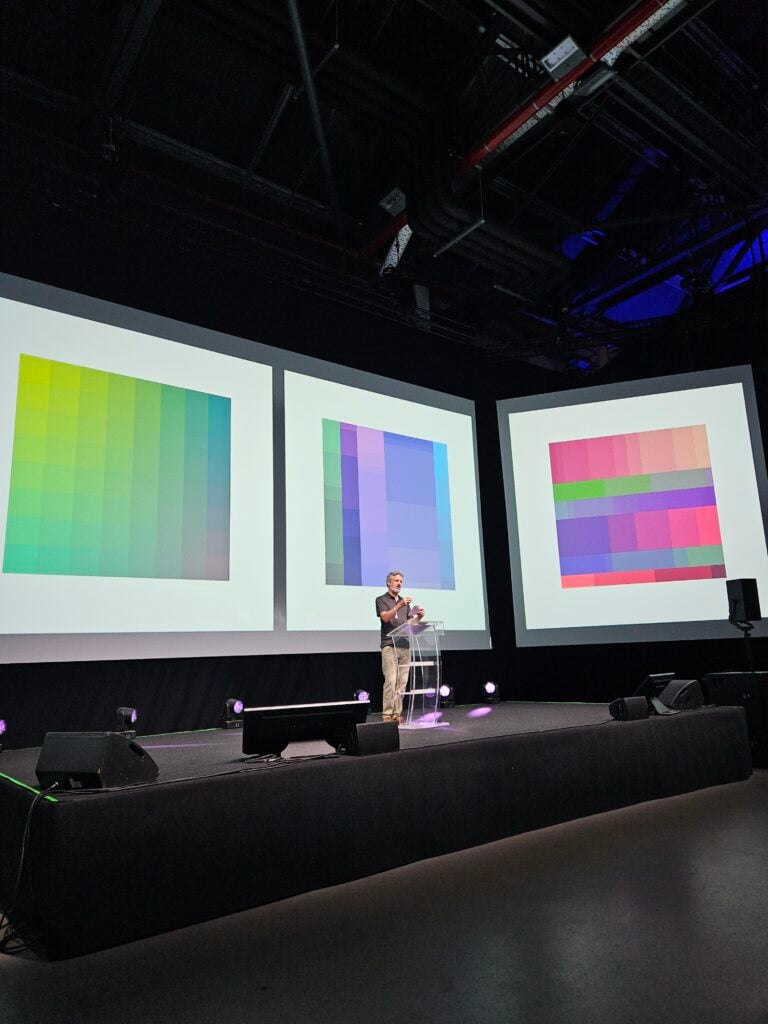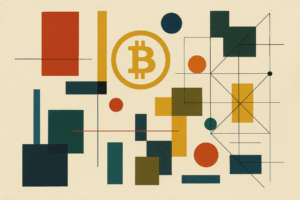From traditional painting to NFTs, the American artist Jeff Davis has built a path that combines mathematical rigor, code, and color. An evolution that has made him a key figure in the world of cryptoart.
“`html
From the classrooms of Chicago to the discovery of color theory
“`
Jeff Davis’s journey has deep academic roots. After studying at the School of the Art Institute of Chicago, he came into contact with the theories of Josef Albers, particularly through the famous Interaction of Color. This analytical approach to color, based on relative perception and systemic composition, has had a lasting impact on his art.
Davis delved into various color systems — such as Munsell and Ostwald — and began experimenting with the use of color intervals, meaning homogeneous visual transitions between two shades. Color, for him, was never decoration, but the supporting structure of the work.
Architectural abstraction as a container of color
In his first artistic phase, Davis worked on forms inspired by architecture: linear structures that evoke doors, windows, and walls. These elements did not have a representative function but served as geometric spaces within which to explore color.
The approach was extremely precise: the works were designed digitally, but then created by hand, with adhesive tape and acrylic paint. Each color gradation was studied to achieve harmonies and contrasts consistent with the theoretical schemes studied at an academic level.
The transition to digital: prints and absolute control
With the advancement of printing technology in the early 2000s, Davis began producing his works directly as digital prints. This transition marked a turning point: the computer was no longer just a design tool, but the main expressive medium.
Using graphic software, he could calculate with extreme precision the chromatic intervals and create complex harmonies, such as those between complementary colors or the two-dimensional scales, with transitions on the X and Y axes. Each work was the result of rational planning, where nothing was left to chance.

The generative turning point: when art meets NFTs
In 2009, Davis decided to explore a new dimension: that of generative art.
Begin to study Processing, a visual programming language, and to write algorithms to generate one’s own works. The goal is clear: introduce chance as an active part of the creative process, delegating some formal choices to the code.
This paradigm shift frees it from the constraints of representation and architecture. The works become pure algorithmic abstraction, built on rules, variables, and parameters. The color transforms from an aesthetic object to a dynamic system, calculable and modifiable in real time.
NFT: the discovery of a new frontier
The real leap comes in 2019, when Jeff Davis discovers NFTs. Thanks to platforms like Art Blocks, the artist can finally combine his generative practice with a native digital form, which allows for the production of unique works at the moment of minting, directly from code.
NFTs represent for Davis the ideal framework for his art: they eliminate the limits of printing, physical space, and reproduction. Each collection can generate hundreds or thousands of variations, each unique but consistent with a well-defined aesthetic logic.
Physical Collaborations and New Dimensions
Davis also begins working with Bright Moments, a project that brings NFT art to physical galleries around the world. On these occasions, the artist introduces a new variable into his work: time. Thus, Culmination is born, a generative work in which the colors not only arrange themselves in space but slowly change over time, rotating along the color wheel.

It is the first time that Davis introduces animation into his work. The piece continuously transforms, creating fluid and immersive visual experiences, in which the viewer does not simply observe a painting, but witnesses an evolving process.
Jeff Davis is an artist who has managed to combine science and creativity, transforming color theory into a computational language. His journey, from manual painting to generative NFTs, represents a coherent and visionary evolution.
In the landscape of blockchain art, Davis is a reference figure for those who consider technology not just a means, but a new grammar of art. His research on color, form, and time paves the way for a future in which the algorithm is artist and the work is process.









